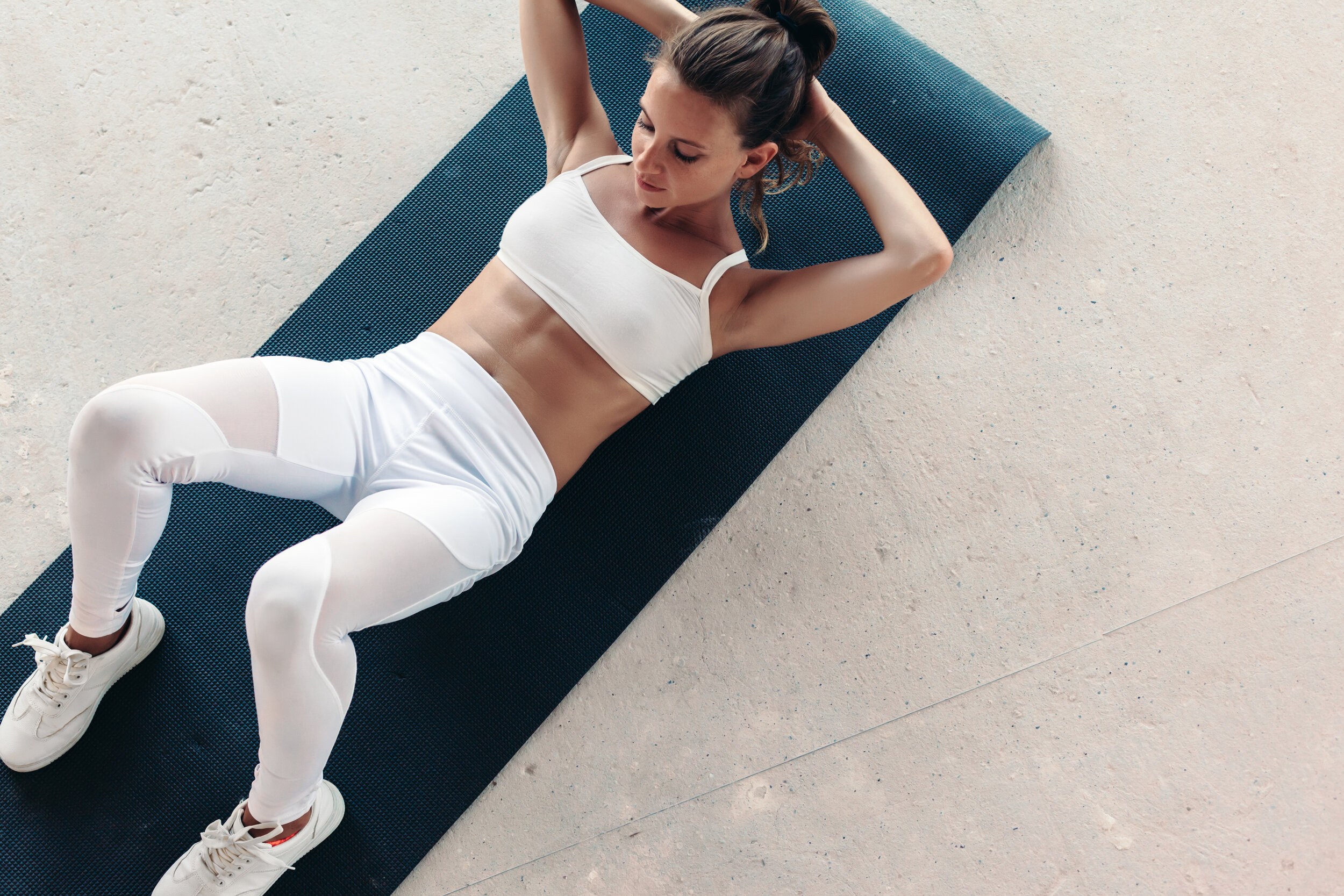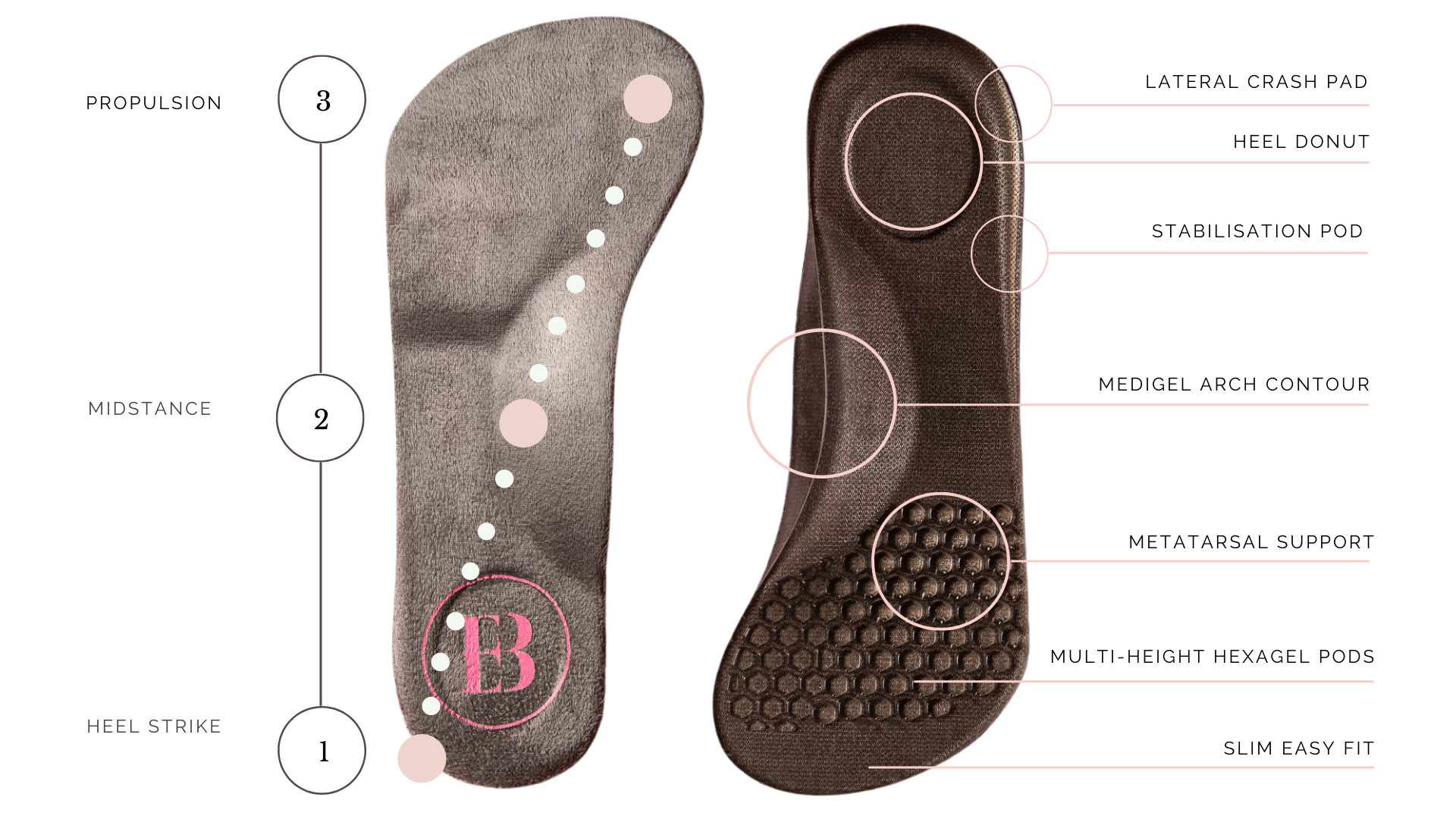
Insoles For Performance.
Improve alignment, boost output & prevent injuries.
The Kinetic Chain
Very few of us are lucky enough to have a perfectly symmetrical and balanced kinetic chain. We often have a more dominant side, a lazy muscle or posture that is less than ideal. This asymmetry can be acquired or congenital and is carried through into all forms of exercise and training.
Exercise highlights individual musculoskeletal discrepancies in subtle and not-so subtle ways. Recurrent tightness in one muscle or area, reduced comparative strength and power, unilateral instability, unilateral technique flaws, pain and injury, are all unwelcome signs of biomechanical disparity.
In the lower limb, a myriad of reasons can cause biomechanical discrepancies. Under pronation, over pronation, a stiff big toe joint, previous injury, joint hypermobility, bunion deformity, accessory bones, impingement, a limb length difference, bone spurs, muscle / tendon shortening and reduced range of movement can all significantly impact ability to perform certain movements efficiently.
The result?
Compensation. The body will always find a way to perform a movement, albeit inefficiently. Compensation leads to other areas above and / or below the site being compromised and further compensations being made. Eventually, the compensations will hinder exercise progression, effect performance and potentially contribute to injury.
A competitive advantage.
As the foundation of any weight bearing exercise, optimal foot function underpins the outcome of a movement and ultimately, the success of a training program.
Poor foot function causes foot and shin bones to over-rotate leading to some muscles to over work and other muscles to under work. This causes accumulative muscle discrepancy, tightness, fascia overload and increased strain on bone and soft tissue structures within the foot and proximally.
Simply fine tuning foot alignment with the right type of insole can provide significant gains in muscle activation (particularly of the posterior chain), acceleration, power output, endurance and ultimately, performance.
Don’t run the gauntlet.
The Emily Braidwood philosophy is to facilitate optimal foot motion to improve performance and minimise the risk of injury. We have developed our patented insole support to guide the foot through the gait cycle, preventing excessive foot motion and promoting stable, aligned, spring-enhancing foot function.
Smart engineering for optimal performance.
Lateral Crash Pad.
Land lighter and in an optimal position to move forwards.
Balanced Support.
Move through your gait cycle with guided support where it’s needed, not where it’s not.
Shock Absorption.
Our sophisticated engineering provides some room for impact when the sessions get tough.
Spring Acceleration.
Our forefoot wedge effectively activates the plantar fascia to promote optimal toe off position and acceleration.

Learn more about the science.
“I’m stunned at how much these have helped my performance! I’m lifting heavier, running further & recovering quicker than I ever have before. I’m a total convert!”
– Ellie Coleman, Gym Manager
“I was constantly getting injured. I now always train in my EB’s and my teacher keeps commenting on my improved alignment. I highly recommend them!”
– Susie Ellison, Student & Professional Dancer.
How to use EB innersoles in shoes:
How to use EB innersole for barefoot activity:
Check out the video to see how to use the insoles across all styles of shoes.
For shoes with a removable insole i.e. trainers, football boots and running shoes, simply remove the shoe liner, place the EB insole into the shoe towards the heel and then replace the shoe liner over the top.
For shoes without a removable liner, peel off the plastic backing and stick the insole into the shoe towards the heel. Voila, immediate support & comfort!







